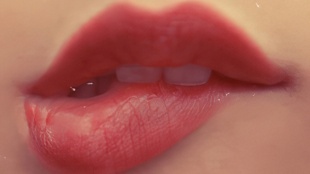您需要 登录 才可以下载或查看,没有账号?注册

x

Introduction
Hey there. My name is Maxim Svynoboi, and I am a 21 years old self-taught environment and props artist. I started my way in 3D back in 2018. Now I'm working as a 3D artist at "ROOM 8 STUDIO".
介绍
嘿,你好。我的名字是Maxim Svynoboi,我是一名21岁的自学环境和道具艺术家。我在2018年开始从事3D工作。现在我在“ROOM 8 STUDIO”担任3D艺术家。

Goals
My main goal was to create something in a non-photorealistic style because I wanted to improve my skills in stylized art. For this, I decided to move from photoreal to stylization gradually.
I mainly focused on high-poly creation and texturing. Another goal is to create a high-quality prop in a short time with a deadline.
I wanted to spend no more than five days on this model, working on my own time, spending about three or four hours in the evenings.
目标
我的主要目标是以非照片级真实感的风格创作一些东西,因为我想提高我在风格化艺术方面的技能。为此,我决定逐渐从照片级真实感转向风格化。
我主要专注于高多边形创作和纹理。另一个目标是在截止日期前的短时间内创造出高质量的道具。
我想在这个模型上花不超过五天的时间,在我自己的时间上工作,在晚上花大约三四个小时。
Softwares
For this work, I used the following software:
● Maya – blockout, low-poly, and UVs;
● Zbrush – high-poly;
● Rizom UV – UVs packing;
● Marvelous Designer – simple cloth simulation;
● Substance Painter – texturing;
● Marmoset Toolbag – baking and rendering;
软件
对于这项工作,我使用了以下软件:
● Maya – blockout, low-poly, and UV;
● Zbrush – 高聚;
● Rizom UV – UV包装;
● 奇妙的设计师 – 简单的布料模拟;
● 物质画家 – 纹理;
● 狨猴工具袋 – 烘焙和渲染;
Reference
Since I wanted to focus mainly on high-poly creation and texturing, I decided to repeat the concept so I wouldn’t have to spend time creating a unique idea. I found a reference for this miniature on Pinterest and decided to recreate it with minimal changes.
参考
由于我想主要关注高多边形创作和纹理,我决定重复这个概念,这样我就不必花时间创造一个独特的想法。我在Pinterest上找到了这个微缩模型的参考,并决定用最小的改动来重新创建它。
Blockout
Based on my reference, I started blockout in Maya and just checked with the proportions.
After hitting ratios, I add more information to the objects to load them into the ZBrush.
封锁
根据我的参考,我开始在Maya中阻止,只是检查比例。
命中比率后,我向对象添加更多信息以将其加载到ZBrush中。
At the blockout stage, I try not to add many details, start with the main shapes, and gradually move on to smaller ones. My final blockout includes all big and small objects, with the topology closed to the final low-poly.
在封锁阶段,我尽量不添加太多细节,从主要形状开始,然后逐渐转向较小的形状。我的最终块包括所有大对象和小对象,拓扑结构与最终的低多边形关闭。
High-Poly
Before uploading to the ZBrush, I already have a detailed blockout with assigned soft/hard edges. One last step before exporting to ZBrush is creating fast UVs based on hard edges.
I created a shelf in my UV editor that can help me do quick UVs in a few clicks.
● Camera-Based Projection (to remove all existing UVs)
● Auto Seams (cut along hard edges)
● Unfold (with some simple parameter tweaks)
● Orient Shells (it is not necessary right now)
● Layout UV (to avoid overlapped edges)
高聚
在上传到ZBrush之前,我已经有一个详细的块,并分配了软/硬边缘。导出到ZBrush之前的最后一步是基于硬边创建快速UV。
我在UV编辑器中创建了一个搁板,可以帮助我只需单击几下即可快速完成UV。
●基于相机的投影(删除所有现有的UV)
●自动接缝(沿着硬边切割)
●展开(通过一些简单的参数调整)
●定向外壳(现在不需要)
●布局UV(以避免重叠的边缘)
These are not final UVs; I need them to create crease edges along UV seams in Zbrush.
After importing the model into Zbrush, I started my Highpoly stage by creating polygroups with UV. Then I creased these polygroups and added divisions on my mesh a few times.
After I split geometry by connected pieces, I started working with every subtool (sometimes I merge similar subtool for convenience).
这些不是最终的UV;我需要它们在Zbrush中沿着UV接缝创建折痕边缘。
将模型导入 Zbrush 后,我通过创建带有 UV 的多元组来开始我的 Highpoly 阶段。然后,我折痕了这些多聚群,并在网格上添加了几次划分。
在按连接的片段拆分几何图形后,我开始使用每个子工具(有时为了方便起见,我会合并类似的子工具)。
Next comes the very meditative process of sculpting. I use dynamesh and polish to create simple bevels and add edge damage. I don’t usually use many brushes. The main work was done with TrimDynamic, Clay Buildup, Move, Standart, and Orb brushes. Also, I used some alpha projections for wood details.
Then I decimated my high poly and exported it to Maya.
接下来是雕刻的冥想过程。我使用动态网格和抛光来创建简单的斜面并增加边缘损伤。我通常不使用很多刷子。主要工作是用TrimDynamic,Clay Buildup,Move,Standart和Orb brush完成的。此外,我还对木材细节使用了一些阿尔法投影。
然后,我摧毁了我的高多边形并将其导出到Maya。
Cloth parts I created in Marvelous Designer with some additional sculpt in ZBrush. Nothing special, a simulation of simple fabric flaps.
我在Marvelous Designer中创建的布料部件,并在ZBrush中进行了一些额外的雕刻。没什么特别的,模拟简单的织物襟翼。
Low Poly and UV
I use my detailed blockout, which I also used for high poly. I cleaned up the mesh and added polygons where needed.
The same technique as in the beginning is used for the UVs, but there is more handwork. I check all of my UV islands for distortions and proper texel density. For some UV shells, I changed texel density depending on visibility. After unfolding all of my UVs and assigning good texel density, I export my low-poly to RizomUV for UV packing. In this project, I didn’t think much about overlaps (except for the chain) because I wanted to achieve a nice unique texture. Everything fits in a 4k texture.
低聚光和紫外光
我使用我的详细块,我也用它来做高多边形。我清理了网格,并在需要时添加了多边形。
与开始时相同的技术用于UV,但有更多的手工制作。我检查所有UV岛是否有失真和适当的纹素密度。对于某些紫外线外壳,我根据能见度更改了纹素密度。在展开所有UV并分配良好的纹理密度后,我将低聚体导出到RizomUV以进行UV包装。在这个项目中,我没有考虑太多重叠(除了链条),因为我想实现一个漂亮独特的纹理。一切都适合4k纹理。
Baking
To my mind, the best and most handy baker is in Marmoset Toolbag.
I prefer to bake all the texture maps in Marmoset because it allows you to make edits quickly, reload the high-poly and low-poly files in real-time, visualize the cage and edit the skew map.
烘
在我看来,最好和最方便的面包师是在狨猴工具袋中。
我更喜欢在Marmoset中烘焙所有纹理贴图,因为它允许您快速进行编辑,实时重新加载高多边形和低多边形文件,可视化笼子并编辑倾斜贴图。
To prepare the model for baking, I assigned different materials on high poly for the ID mask, separated low poly and high poly via _high and _low suffix to avoid overlap, then loaded the FBX into the Marmoset Toolbag via quick loader. Additionally, I baked the ID map for easy mask creation in the texturing stage.
为了准备用于烘焙的模型,我在高聚上为ID掩模分配了不同的材料,通过_high和高聚分离低聚和高聚,_low后缀以避免重叠,然后通过快速装载机将FBX加载到Marmoset工具袋中。此外,我还烘焙了 ID 映射,以便在纹理化阶段轻松创建蒙版。
Texturing
I create textures in Adobe Substance 3D Painter. I start by texturing the largest objects, gradually moving to smaller ones.
After painting the main parts, I begin to work with the small details, such as paint leaks, chips, dirt, and dust.
When I have a lot of materials in a scene, masks from ID-map make work a lot easier.
纹理
我在Adobe Substance 3D Painter中创建纹理。我从对最大的物体进行纹理处理,然后逐渐移动到较小的物体上。
在涂漆主要部件后,我开始处理小细节,例如油漆泄漏,碎屑,污垢和灰尘。
当我在场景中有很多材质时,ID-map中的蒙版使工作变得容易得多。
https://gamesartist.co.uk/wp-content/uploads/2022/08/08_Texturing.gif
After texturing, I create quick renders in Marmoset Toolbag.
纹理化后,我在Marmoset Toolbag中创建快速渲染。
Conclusion
To my mind, I have achieved all of my goals for the project. I kept to my schedule and got a decent result (in my humble opinion). I plan to do my following works in a more stylized way, and I will do my best to make them better and better every time.
Thanks to the Games Artist team for giving me this opportunity to write this article. I hope to share some breakdowns of my subsequent works in the future.
结论
在我看来,我已经实现了这个项目的所有目标。我遵守了我的日程安排,并得到了一个不错的结果(以我的拙见)。我计划以更程式化的方式做我的后续作品,我会尽我所能让它们每次都越来越好。
感谢游戏艺术家团队给我这个机会写这篇文章。我希望将来能分享一些我后续作品的细分。
|







 评分
评分








